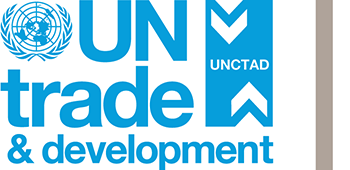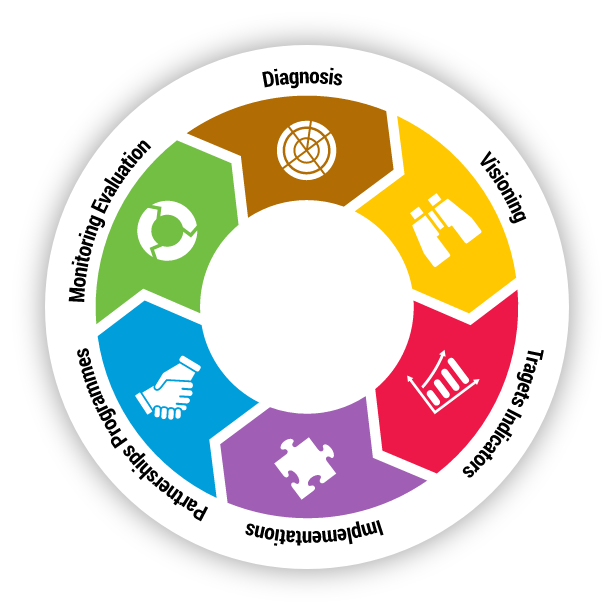Common barriers that influence the ability of stakeholders to develop and implement a sustainable freight strategy include:
Data limitation
Fragmented industry
Limited partnerships
Lack of penetration of technologies
Limited awareness and capacity
Weak legal and regulatory framework
1 Awareness raising, training and capacity building
2 Experimentation projects and technology
3 Financing
Incentives with improved access to affordable finance, especially for SMEs increase the pace of diffusion of technical innovations that require significant upfront or capital investment. The problem seems to be more acute in developing countries where the interest rates could be as high as 15-25%. Other challenges driving the lack of affordable finance are small business size, collateral requirements, documentation and financial literacy, and weak credit skills and poor business practice. By improving the fuel efficiency of freight transport, exposure to increasing energy costs can be reduced. This, in turn, can make business practices more sustainable and reduce future loan defaults.
Financing the construction, operation and maintenance of freight transport infrastructure involves different types of funding sources. These include, among others, national and international sources, grants, cooperative agreements, and revenue sources from both the public and the private sector.
The table below highlights the financing instruments which directly influence freight transport stakeholders (direct benefit instruments). Indirect benefit instruments (e.g. advertising) charge stakeholders for indirect benefits stemming from the transport investment while direct benefit instruments such as fuel taxes directly charge freight transport stakeholders. Fuel taxes for example are effective across the three sustainability dimensions (economic, social and environmental). Taking Stockholm as an example, it has been established that if the city had continued with business as usual and had not established “congestion charging”, the city’s air would have been 5 to 10% more polluted between 2006 and 2010. In addition, young children would have suffered 45% more asthma attacks.
Table: Sustainable Freight Transport Instruments (based on Sustainable Urban Transport Financing from the Sidewalk to the Subway, the World Bank)
| Sustainable Freight Financing Instruments | Stability | Political Acceptability | Administration Ease | Impact | Level of Application | ||||
|---|---|---|---|---|---|---|---|---|---|
| Economic Efficiency | Social Equity | Environmental Impact | Scale of Finance | ||||||
| General Benefit | Transport Subsidies (low emission modes) |
|
|
|
|
|
|
| Local / Urban / National |
| Property Tax |
|
|
|
|
|
|
| Urban / National | |
| Business Tax |
|
|
|
|
|
|
| Local / Urban / National | |
| Loans and Grants |
|
|
|
|
|
|
| Local / Urban / National | |
| Direct Benefit Instruments | Parking Charges |
|
|
|
|
|
|
| Local / Urban |
| Road Pricing |
|
|
|
|
|
|
| Local | |
| Congestion Charges |
|
|
|
|
|
|
| Local / Urban | |
| Fuel Tax |
|
|
|
|
|
|
| Local / Urban / National | |
| Vehicle Ownership Tax |
|
|
|
|
|
|
| Local / Urban / National | |
| Mileage Based Taxation |
|
|
|
|
|
|
| Local / Urban / National | |
| Vehicle Inspection Fee |
|
|
|
|
|
|
| National | |
| Heavy Vehicle Fee |
|
|
|
|
|
|
| National | |
| Indirect Benefit | Advertising |
|
|
|
|
|
|
| Local |
| Employer Contribution |
|
|
|
|
|
|
| Local | |
| Betterment Tax |
|
|
|
|
|
|
| Local | |
| Tax Increment Financing (TIF) |
|
|
|
|
|
|
| Local | |
| Special Assessment |
|
|
|
|
|
|
| Local | |
| Transportation Utility Fee |
|
|
|
|
|
|
| Local | |
| Development Impact Fees |
|
|
|
|
|
|
| Local | |
| Negotiated Exactions (NE) |
|
|
|
|
|
|
| Local | |
| Joint Development Mechanism |
|
|
|
|
|
|
| Local | |
| Air rights sale |
|
|
|
|
|
|
| Local | |
| Public-Private Partnerships |
|
|
|
|
|
|
| Local / Urban / National | |
| Climate Finance | Global Environment Facility |
|
|
|
|
|
|
| Urban / National |
| Clean Technology Fund |
|
|
|
|
|
|
| Urban / National | |
| Clean Development Mechanism |
|
|
|
|
|
|
| Urban / National | |
| Nationally Appropriate Mitigation Action |
|
|
|
|
|
|
| Urban / National | |
| Climate Bonds |
|
|
|
|
|
|
| Urban / National | |
| Partnership for Market Readiness |
|
|
|
|
|
|
| Urban / National | |
| Green Climate Fund |
|
|
|
|
|
|
| Urban / National | |
| Rating | Description |
| Low level of achievment by an instrument for each attribute |
| Medium level of achievment by an instrument for each attribute |
| High level of achievment by an instrument for each attribute |
Traditionally, freight transport infrastructure projects were financed primarily through a combination of state funding streams such as taxes, fees and local funds based on "pay-as-you-go" principle i.e. projects are built in phases based on political priority and funding availability. However, the traditional approach of funding and financing is not suitable for scaling-up sustainable freight transport projects. Fundamental changes that take into consideration different funding and financing mechanisms and promote the use of innovative approaches are needed. Innovative finance encompasses a combination of techniques and specially designed mechanisms to supplement traditional financing sources and methods. Examples include leveraging additional funding from new sources of funding (e.g. climate finance, public-private partnerships), reforming transport prices and financial management, adopting new institutional arrangements, and using the “Polluter pays” principle.
Freight transport project investments must compete with investment requirements from other sectors including passenger transport and moving away a project from the “drawing board” is challenging. They do not compete well with non-freight projects because of the way public investments are evaluated. Raising the profile of freight transport projects in the urban, regional and national policy agenda, requires that the benefits of sustainable freight transport projects along all three dimensions of sustainable development be highlighted and that the support of external stakeholders be secured. The development of quantifiable co-benefits criteria (where benefits are evaluated across the economic, social and the environmental dimensions) can help projects aimed at enhancing the sustainability of the freight transport sector obtain a “fighting chance” to compete for funding with other proposed projects.

